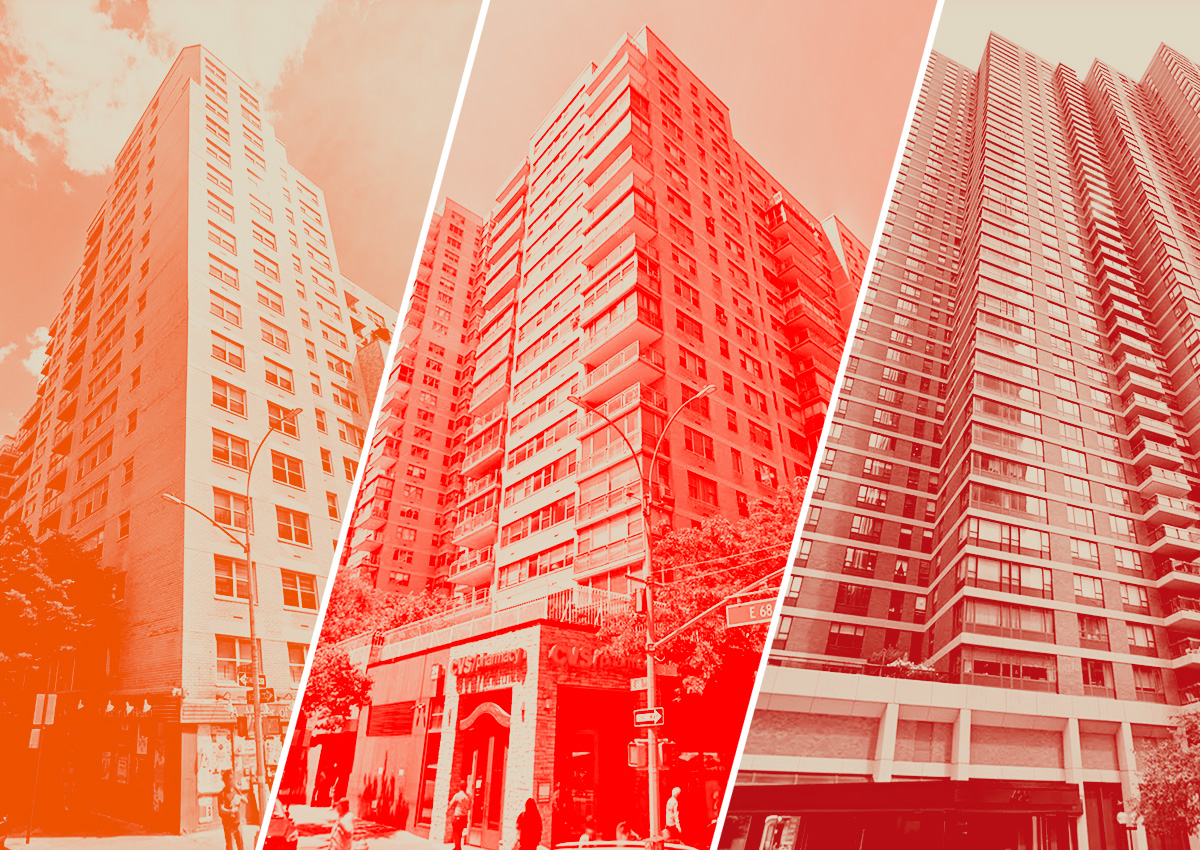Lisa Lippman cut her teeth selling uptown co-ops.
When the Brown Harris Stevens broker started her career 25 years ago, Manhattan’s aristocracy reigned at the “good buildings” on Fifth and Park, while famed conversions on the Upper West Side drew athletes, creatives and the wealthy who wanted to live among them.
Buyers were clamoring for their own spots near Central Park, and co-ops were key.
“If you didn’t sell co-ops, you didn’t sell anything, unless you were a brownstone broker,” the veteran broker said.
But co-ops have since lost some of their luster. As developers turned to condos to reach new heights, demand for co-ops plateaued as prices remained stagnant, and strict board requirements pushed wealthy buyers away. Once-profitable retail space on the ground floors now sits empty.
With their financial futures on shaky ground, some co-op boards turned to new and in some cases offbeat measures to boost their coffers and lower their monthly maintenance costs. From investing in commercial property to renting out rooftop space, the buildings are changing their ways to contend with the economic challenges.
State of the co-op
Up until roughly 15 years ago, co-ops had the monopoly on large, family-sized apartments. At the time, most of the condos in Manhattan were investment properties, small units situated in the no-man’s land between the avenues closest to the park and the rivers.
“For a while, we thought that people would still opt to be on Fifth, Park, Central Park West,” Lippman said.
But that wasn’t the case. Instead, a flood of new development condos sparked a push among developers to build bigger, better and taller, drawing buyers, particularly for the luxury sector.
“New and different is being cornered by the condo market,” said Miller. He added that co-op turnover is slow, and the product mix at the typically older buildings remains relatively unchanged.
In the early 1990s, the market share of co-op sales used to be two to three times that of condos, but that ratio has since changed to nearly 50-50, according to Miller Samuel.
Over the last decade, condo prices have also significantly outpaced co-ops. The median sale price of a co-op increased 37 percent from the second quarter of 2013 to the same period in 2023, while for condos, it nearly doubled.
The change is most evident in the city’s high-end co-ops, which have been “the weakest luxury subset of the housing market for nearly a decade,” Miller said.
With condos as the new kings, younger generations of brokers have strayed from peddling co-ops.
“Newer brokers who came into the business and mainly sold condos don’t understand co-ops,” Lippman said. “They don’t really understand [them], and they don’t know how to do a board package.”
When the market hit a high in the late ’90s, buyers were willing to bend to drastic measures.
Per agent’s orders, one couple, a Wall Street trader and a stockbroker, tied the knot six months early to lock down a West End co-op, the New York Times reported in 1997. Just a month after they shelled out for the deposit, the pair’s nuptials were officiated by an Episcopal priest — who was also the seller of the apartment.
In an effort to attract more buyers, many previously uncompromising co-ops have eased their infamous restrictions. Some buildings on the Upper East Side now permit buyers to finance deals for their apartments and bring their pets with them. Others have relaxed summer work rules for renovations, while some are allowing owners to build “wet over dry.”
“They’re not interested in doing things the way it’s always been done. They want progress.”
But if given a choice between a typically lax condo and a notoriously strict co-op, many of the city’s wealthiest buyers are opting for the former.
“A 35-year-old Wall Streeter doesn’t have to go through a dog-weighing ceremony,” Miller said, referring to some co-ops’ strict rules on pet size.
While Miller acknowledged he doesn’t know how co-ops determine which pets are allowed in, his conjecture isn’t far off. Tom Furth, then president of Georgetown Plaza, told the Times in 1995 the East Eighth Street co-op designated one elevator in each of its banks as “human only.”
But co-ops have more to contend with than a decline in popularity and a reputation for being antiquated. Rising property taxes — up 3 percent from last year’s already hefty increase — continue to drive up monthly maintenance fees, while pandemic-related retail vacancies drain their reserve funds.
At some co-ops, board managers are looking to pad their accounts with alternative revenue streams. For one Midtown building, that led to a commercial property investment.
The board at 205 West 54th Street sold the air rights above the 78-unit building for $14 million in 2015, but didn’t stop there. The board opted for a 1031 exchange — a tax break applied to those who sell one property and use the proceeds to immediately invest in another.
Using $11.7 million from the sale, the co-op purchased two triple-net lease properties the following year and forecast at least $2.7 million in rent by 2020, according to financial statements published in December 2015.
Read more



The long pivot toward proactivity
On the heels of the stock market crash in the late ’80s, boards started to approach their finances more proactively. The city was recovering from a corruption scandal where more than 80 management companies were charged with extorting millions from outside contractors.
Freshly burned by managing agents, many co-ops moved beyond naysaying prospective shareholders and welcomed board members outside of their usual cast of characters.
“It used to be just lawyers and accountants,” Frederick Peters, now president of Coldwell Banker Warburg, told the Times in 1995. “Now they want architects, landlords, engineers — people who know how to get repairs done, and know who will do the best job the cheapest.”
The scandal and economic peril also pushed boards to craft more explicit policies, including requiring shareholders to show proof of homeowners’ insurance. When the market turned, some buildings relaxed subletting rules, but they tightened them again in the mid-’90s over concerns that banks would reject mortgage applications.
The financial reckoning also drove boards to refinance their debt and nail down lines of credit for future repairs — a necessity for an aging crop of buildings. Finance and real estate professionals noted a curiosity among some board members looking to make savvier investments.
Going green
Co-ops have long targeted their extra space — above and below — as potential sources of revenue.
Basements turned into for-purchase storage units. Rooftops, in some neighborhoods, welcomed billboards to collect advertising dollars. Telecommunications and media companies like Verizon and Spectrum signed decades-long leases to install transmitters on unused roof space.
Now some co-ops are collecting rent for rooftop solar panels from energy efficiency companies, according to Tina Larsson, the co-founder of the Folson Group, a co-op and condo consultancy.
Extra income isn’t the only motivation for co-ops looking to boost their energy efficiency. They’re also facing hefty fines from the city if they don’t comply with regulations to reduce their carbon emissions.
Local Law 97, slated to take effect in January, requires buildings to spend big bucks to reach the city’s emission standards. The Real Estate Board of New York estimates that for the more than 3,700 properties not already up to code, penalties could amount to more than $200 million.
Many co-op owners oppose the new requirements, claiming they’re too burdensome to homeowners and an unnecessary step toward emission goals. A coalition of co-op and condo owners has launched a costly ad campaign pushing back against the rules.
The marketing effort followed a 2022 lawsuit, led by two Queens co-op board presidents, against the city in an attempt to block the measure from taking effect.
To contend with the high cost of upgrades, the city created the NYC Accelerator, a program designed to connect commercial and multifamily owners with lenders to bring buildings into compliance.
But one of the people spearheading the lawsuit has expressed concerns that the lending program will ratchet up debt for already troubled co-ops.
“If this is a condo on Fifth Avenue, where each condo sells for $9, or $4, or $6 or $17 million, I’m not really all that concerned,” Glen Oaks Village President Bob Freidrich told The City. “You can’t imagine how many letters I get that say, ‘We’re on a fixed income, we can’t afford this.’”
Despite this opposition, Larsson said many of the co-op boards she’s encountered are eager to implement improvements, both to avoid fines and to make their buildings more environmentally friendly.
“We often see, you know, Google programmers on the board,” Larsson said. “They’re not interested in doing things the way it’s always been done. They want progress.”
